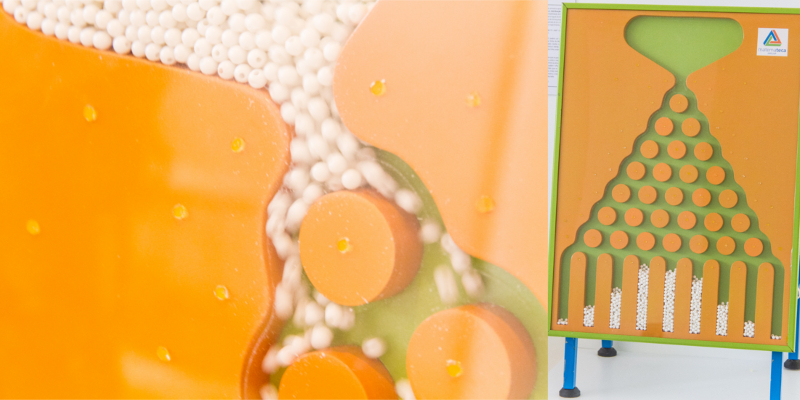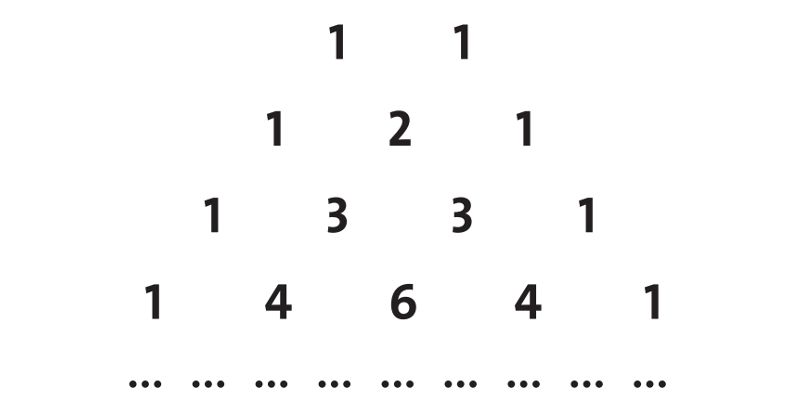GALTON BOX OR QUINCUX
This experiment serves, as a first approximation, to illustrate the so-called binomial distribution.

If on each peg the probability of going to the right or to the left is the same, the marbles below will be distributed proportionally to the coefficients of the expansion of (a + b)n, which is Newton's binomial (in the experiment, n = 9).
For example,(a + b)4 = a4 + 4a3b + 6a2b2 + 4ab3 + b4
has coefficients 1, 4, 6, 4 and 1.
The coefficients of (a + b)n can be easily obtained on the nth line of Pascal's triangle (see figure below). Except at the ends, each number in a row is obtained as the sum of the two elements of the previous row that are closest to it.

However, it is not difficult to notice that the parameters involved in the experiment, such as the radius of the pegs and marbles, the distance between the pegs, the elasticity of the shocks, etc., can influence the result (think, for example, that if the pegs were too apart, then all the balls would fall in the middle). This shows the need for more accurate modeling.
If you want to see a little more about this game, check out the video below! Enjoy and check out the other really cool videos on Matemateca's channel on YouTube!
